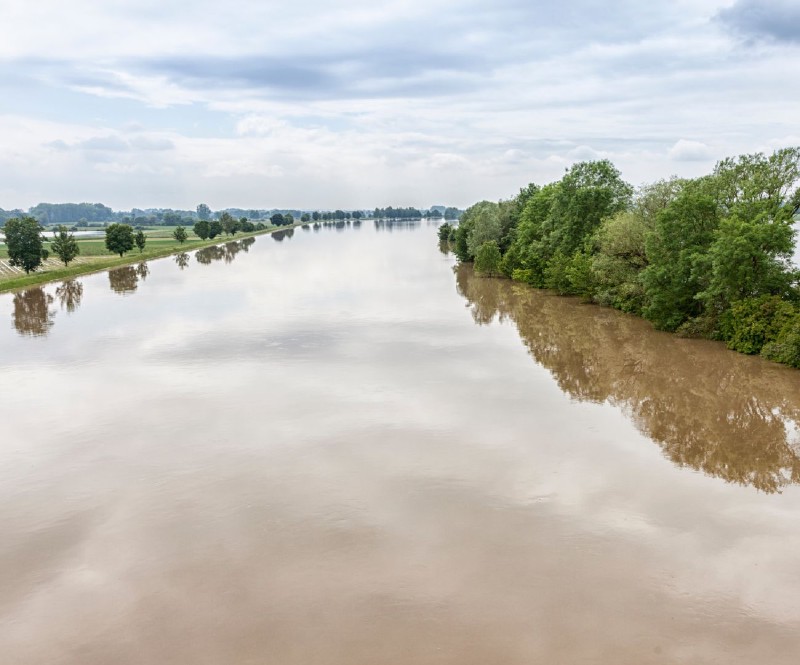Rehabilitation of prefabricated houses after flooding

This year’s floods have affected various parts of Slovenia. Many prefabricated wooden houses were also flooded, requiring quick and specific rehabilitation of the affected parts. In this post, we will explore the proper approach to rehabilitation after our home has been flooded for several hours.
Preparation
Before starting the rehabilitation, it is crucial to ensure safety. First, have to we determine how dangerous the area is. We only proceed with the rehabilitation if it is safe to do so.
Water drainage and opening of wall elements
If our home is flooded for several hours, it is necessary to drain the water from the rooms and open the wall elements to allow the drying of the wooden structural framework. Lining boards – plasterboard, cement-bonded boards and similar – need to be cut approximately twenty centimeters above the water level in the room.
Removal of damaged materials and moisture measurement of the wooden structure
Next, we remove the soaked thermal insulation (mineral wool). With external walls, it is necessary to open the walls from the outside at several points to allow the drainage of any trapped water in the voids. The moisture of the wooden structure must be measured at several points (it must not exceed 18%), followed by monitoring of the drying process. Lining boards also need to be removed in the area of the concrete screed and thermal insulation on the base slab to allow for the drying of the lower wall crossbars.
Drying
What follows is forced drying with the help of dehumidifiers. It is also necessary to ensure proper air movement with fans. After a few days of drying, you should measure the moisture of the wooden structure again to see how the drying is progressing.
It should be noted that in a 5 cm thick concrete screed, there can be up to 15 liters of water per square meter that needs to be dried out. For a 100 m2 floor area, this means 1,500 liters of water. When the moisture of the wooden structure is around 15% or less, we can reinstall new thermal insulation in the walls and install new lining boards. In the case of external walls, we must also apply a moisture barrier on the inside.
The external cladding of these walls is usually not significantly affected even under somewhat longer time stresses and can simply be rinsed with a water jet and painted with a suitable coating for cladding.
Jelovica Homes boasts waterproof cement-bonded boards inside the wall construction, which ensure the strength and stability of the building.
Conclusion
Based on information from the field, we are pleased to note that Jelovica Homes not suffered major damage in this natural disaster.